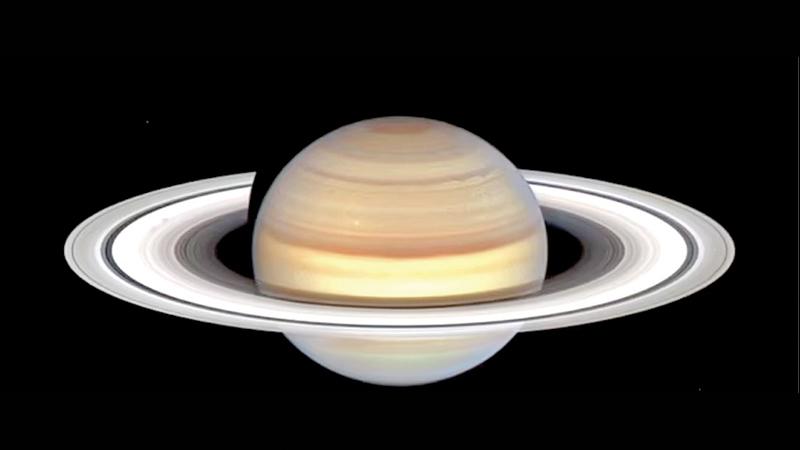
Saturn’s rings are a young age of only 400 million years old — just a fraction of the 5billion years the planet has existed for.
An international team of physicists has the most compelling evidence to date that would pin the origins of the rings as coming about long after the planet formed 4.5 billion years ago, answering a question that has dogged scientists for centuries.
To reach their finding, the team of scientists looked to the constant deluge of space dust, or micrometeoroids, that build up in small layers throughout the solar system, including on the boulders of rock and ice that comprise Saturn’s rings.
Led by the University of Colorado, Boulder, scientists spent 13 years collecting a minuscule amount of dust while measuring the rate at which it accumulated on the planet’s rings, a process which they equated to telling the age of a house by running a finger along its surfaces.
His telescope was not nearly as powerful as those astronomers use today, but in the years that followed star gazers determined that those jug-handle-like outcroppings were actually rings. It wasn’t until the 19th century that the material that makes up Saturn’s rings came into question.
Scottish mathematician James Clerk Maxwell set out to answer this question, having concluded that the rings could not possibly be made up of one solid element, but rather countless ‘unconnected particles’.
He proved mathematically that the force of gravity would break a thin body orbiting Saturn and predicted that the rings were composed of particles that floated around the planet.
For most of the 20th Century, it was believed that the rings likely formed at the same time as Saturn.
Dr Kempf said: ‘In a way, we have closure on a question that started with James Clerk Maxwell.’
And in an unexpected twist, the planet’s rings could be vanishing.
While they’re not expected to disappear completely for about 100 million years, they are losing material constantly.
Constant bombardment from micrometeorites and the sun’s radiation electrifies the particles that make up the rings, lining up with Saturn’s magnetic field and following its invisible path as it spirals around the planet.
But when the particles come too close to Saturn’s atmosphere, gravity sucks them in, creating a phenomenon that astronomers call ‘ring rain.’
Dr. Kempf considers the fact that the Cassini spacecraft was able to capture the ephemeral features incredibly fortunate, though it does not answer the question of how those rings formed in the first place.
He said: ‘If the rings are short-lived and dynamical, why are we seeing them now? It’s too much luck.’ -Daily Mail
